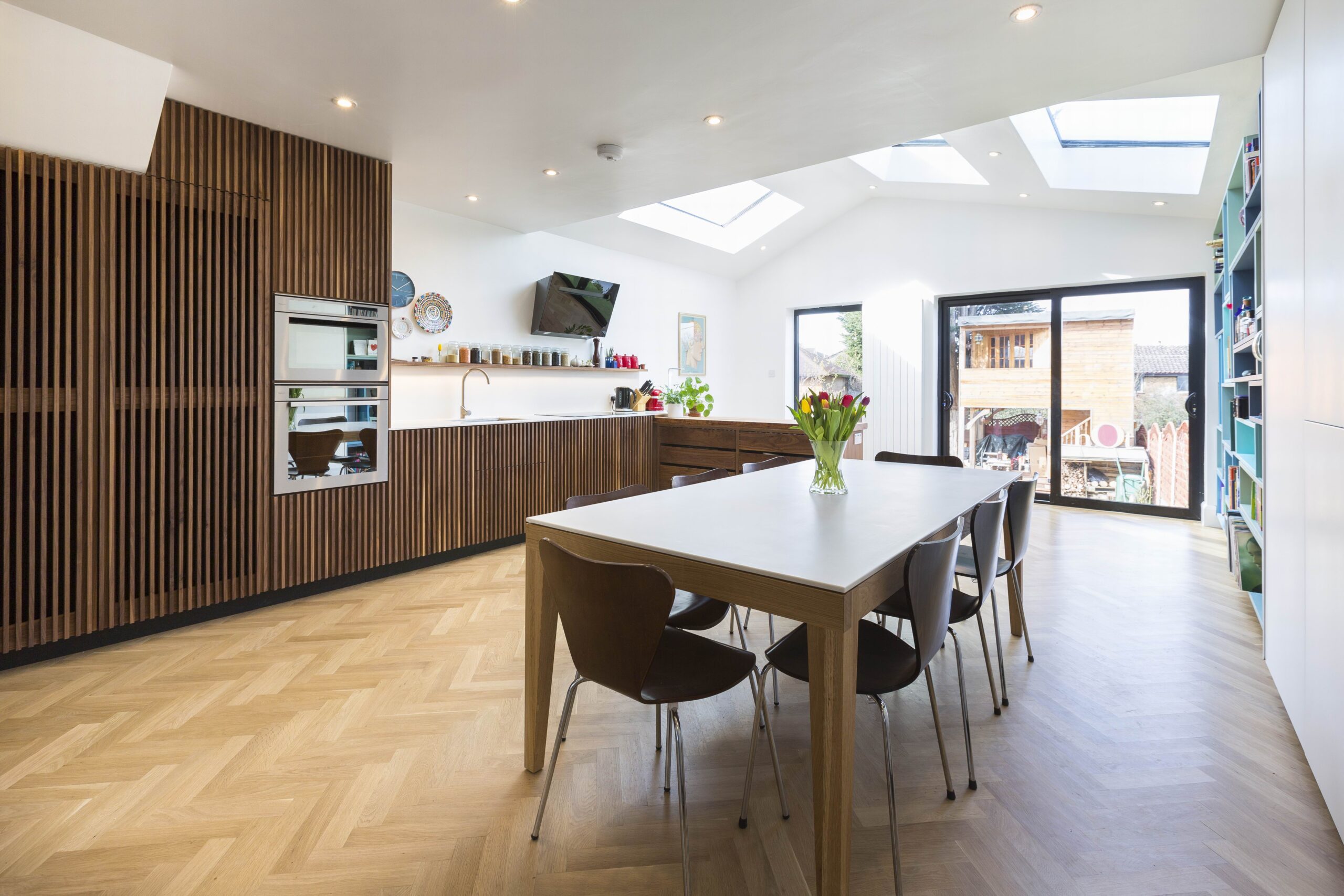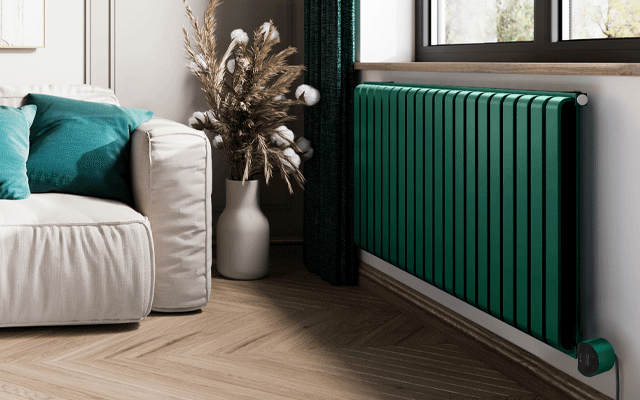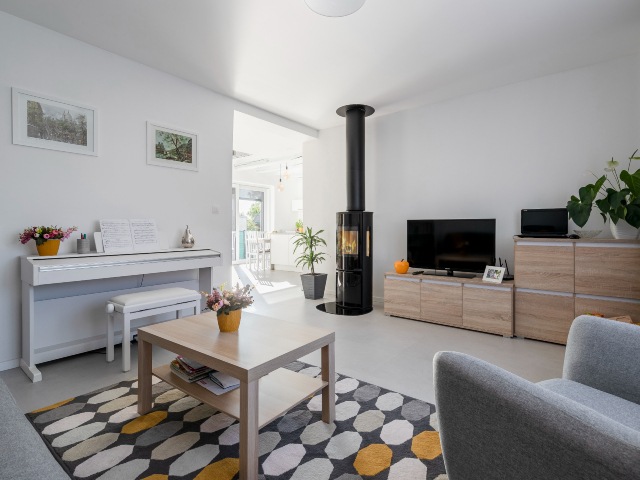My heat pump journey part five: living with a heat pump
Is life with an air source heat pump different to having a gas boiler? I’ve learned a lot since having mine installed.
This is the fifth story in my heat pump journey. Part one is about preparation, especially insulation. Part two is about the survey to see if a heat pump was possible. Part three is about the installation day itself. And part four looks at tailoring cabinets to accommodate a heat pump.
I used to have a gas combi boiler, for hot water and central heating.
When it died, I hurriedly organised the switch to a heat pump because I didn’t want to be wedded to another decade of fossil fuels.
As detailed in my earlier columns, the house was very well insulated, so I only needed to replace two radiators in the process.
But heating your home and water with an air source heat pump is still very different to a gas boiler in day-to-day use…
Tank girl
For starters, I switched to a heat pump from a combi gas boiler, not a system boiler.
So I’m not used to having a tank and a finite supply of hot water – it used to be that, if everyone wanted a bath on the same night, no bother.
But now I have a hot water tank. I can see its temperature on the mini control pad on the wall. And I can see that temperature go down if it’s used a lot.
When someone runs a bath, it’s best to wait a bit before another or press the ‘powerful’ button, which uses an electric element to heat the water fast… but much less efficiently than the heat pump, so I’ve only used it once in nine months.
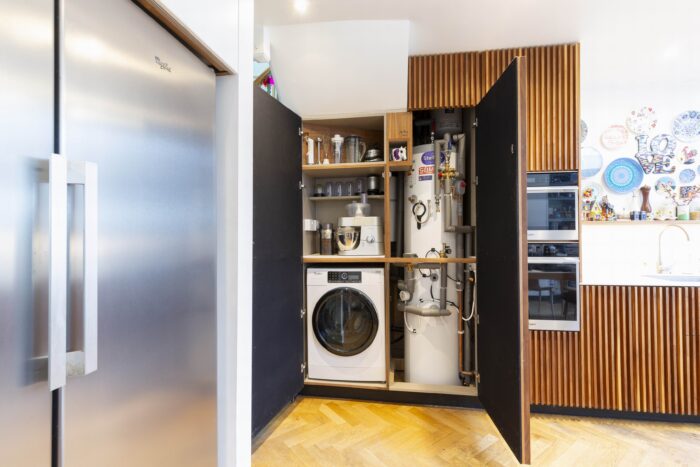
A heat pump means having a tank and a finite supply of hot water. Photo: Paula Smith
Slow and low
The other main difference is that heat pumps circulate water at a lower temperature than gas boilers (around 45-50°C rather than 65-70°C).
That’s why you sometimes need new radiators or better pipework – but it also means that heating works differently.
My heating now comes on more. In fact, I don’t have a timer that turns it on a for a few hours twice a day.
Instead I have a schedule with target temperatures for different times of day – so it’s cooler overnight, comfortable by day and cosy in the evenings.
The system is smart and figures out when to circulate warm water to the radiators.
They end up being on more but they’re never super-hot to the touch, the way they used to be.
This new way of heating the house takes some getting used to, as you tailor the temperature, but it’s brilliant.
We never have the boom and bust of central heating. We no longer take jumpers on and off. It always feels just right, no matter the weather.
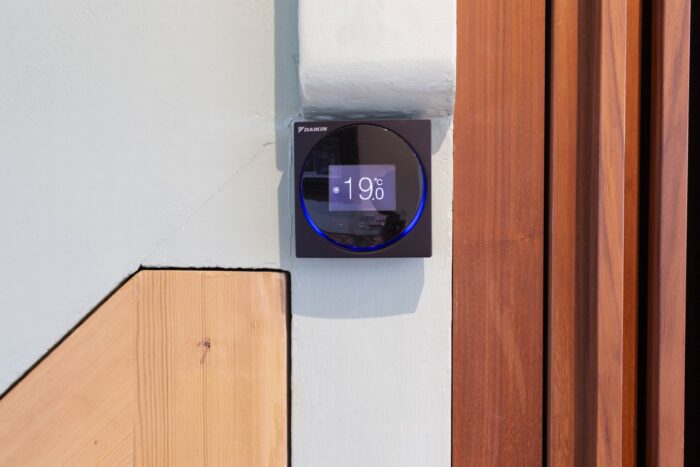
The small control panel lets me change the target temperature. Photo: Paula Smith
In control
My heat pump, which is a Daikin Altherma 3 Monobloc, looks like a big cylinder with lots of plumbing indoors, tucked in a kitchen cupboard.
The outdoor unit is large and looks like the outdoor bit of an air conditioning unit.
I have three ways to control it. There are two control panels: a simple one on the wall (above) the size of a light switch, that lets me change the target temperature, and a bigger one tucked under the stairs (below) that controls everything.
I can also control it all, and create schedules, from the Daikin Onecta app.
The bigger panel and the app give some insight into how clever the system is. Because the water is at a lower temperature, it warms the house up more slowly, so the system needs to anticipate what’s needed.
It does this by consulting my schedule but it also has an outdoor weather sensor to find out how hard it will need to work to heat the house each day. Clever stuff!
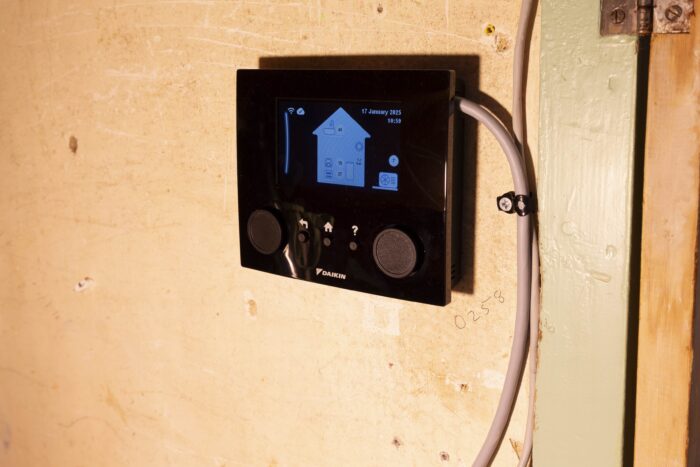
The large panel, tucked under the stairs, controls everything. Photo: Paula Smith
On schedule
You can use the larger control panel or the app to create central heating and hot water schedules.
As my control panel is in the cupboard under the stairs, I always use the app.
You schedule target temperatures for different parts of the day. But, importantly, you can also schedule it to be on more when electricity is cheaper.
I’m on the heat pump friendly Cosy Octopus tariff which offers better-than-half-price electricity three set times a day and is more expensive at peak time (4-7pm).
So, for example, I set the heat pump to overdo it a bit 1-4pm and then ease off afterwards, to avoid the pricy time.
There are even times when the electricity is free.
I am not joking. Octopus Saving Sessions let customers sign up for alerts for times when the grid is brimming with so much electricity (thanks to sun and wind, so it’s green) that in a three-hour session anything you use over and above the norm is free – that’s a great time to heat up your tank.
The app also means I can control the system from anywhere. For example, turning it off to save energy when we go on holiday, even if I only remember after I’ve left – or turning it back on to anticipate our return, warming the house up and readying a tank of hot water for the homecoming baths and showers.
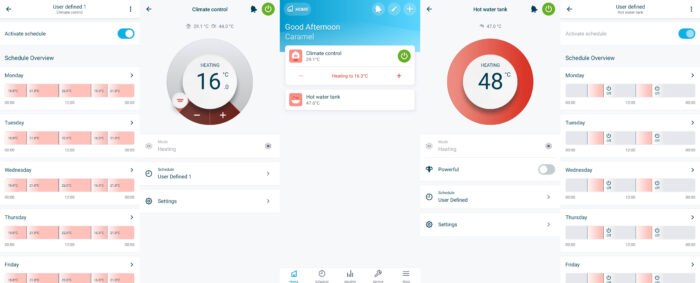
The Daikin Onecta app lets you schedule heating and the hot water tank.
Myths busted
You hear some nonsense in opposition to heat pumps… that you’ll need to replace lots of pipes and radiators (I didn’t). That they’re noisy (it isn’t).
That your home will be cold (it’s actually much cosier than before). That they’re expensive (mine cost about the same as a new boiler, thanks to the Boiler Upgrade Scheme which knocked £7,500 off the installation bill – anyone in England can apply for this if they’re replacing a gas boiler).
In my final column, I’ll answer the most important question of all: will a heat pump save you money on your bills?
Meanwhile, if you didn’t read them yet, do read parts one, two, three and four of my heat pump journey.
Main image: Paula Smith
READ MORE:

